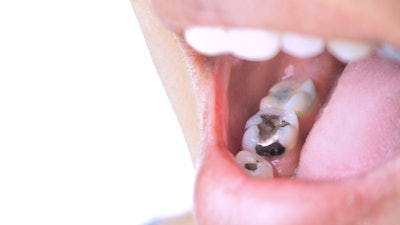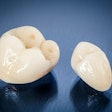
Nonamalgam restorations were the most common in the primary teeth of children older than 5 and in the permanent teeth of adults younger than 40 in the U.S., according to a study published on April 25 in the Journal of the American Dental Association.
The findings may suggest changes in treatment to minimally invasive approaches, the authors wrote.
“The age-related findings suggest a shift from amalgam over time, as alternative restorative materials have been introduced and improved,” wrote the authors, led by Dr. Eugenio Beltrán-Aguilar, MPH, MS, DrPH, of DB Consulting in Atlanta.
For more than 150 years, amalgam has been used and considered a safe and reliable restorative material. In October 2022, the ADA released its policy on amalgam. Currently, it recommends that dentists review the risks and benefits of restorative options but states that amalgam restorations can be used when appropriate.
However, the ADA also supports the need to reduce environmental mercury, which was set forth in the Minamata Convention on Mercury in September 2019. Norway and Sweden have banned the use of dental amalgam.
Using clinical exam data from the U.S. National Health and Nutrition Examination Survey (NHANES) between 2015-2018, researchers analyzed information for 17,040 people older than 2. Next, the researchers estimated the prevalence and mean number of amalgam and nonamalgam restorations in primary and permanent teeth, according to the study.
The prevalence of amalgam restorations ranged from 4% to 69%. Overall, the mean number of teeth with nonamalgam restorations was higher than teeth with amalgam restorations in the primary teeth of children ages 6 to 11 years old and the permanent teeth of those ages 12 to 15 and 20 to 39, the authors wrote.
The mean number of teeth restored with amalgam was higher in those between the ages of 2 and 5 (x = 1.6), and the mean number of teeth with nonamalgam restorations was higher in those between the ages of 6 and 11 (x = 1.7), they wrote.
In patients between the ages of 20 and 39, the mean number of teeth with nonamalgam restorations decreased from 3.1 to 2.1. The ratio of the mean number of teeth with amalgam to nonamalgam restorations was greater than one in every age group except in those between the ages of 20 and 39, the authors wrote.
The study's limitations included that the age and history of the primary and secondary restorations were not known. Despite these differences, NHANES data provide a baseline to monitor the patterns of restorative materials placed in the U.S., they wrote.
“The study findings suggest a shift from amalgam to alternative restorative materials in the United States,” Beltrán-Aguilar and colleagues wrote.



















